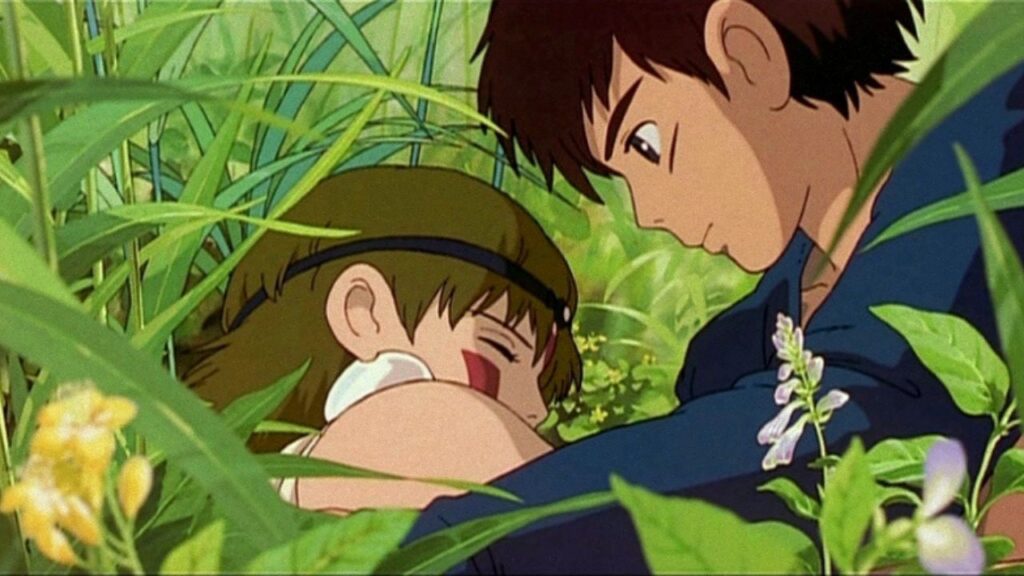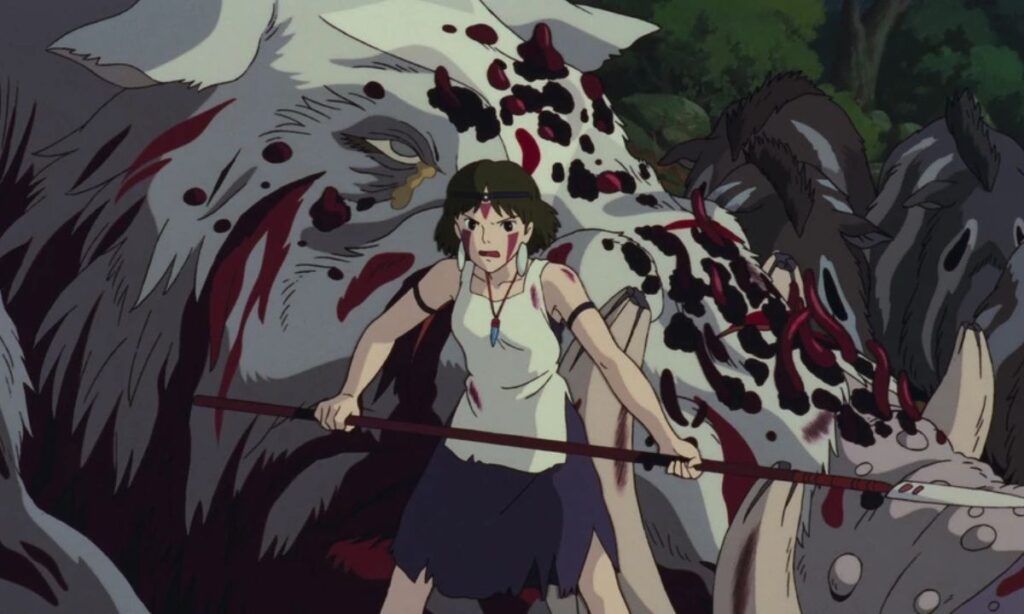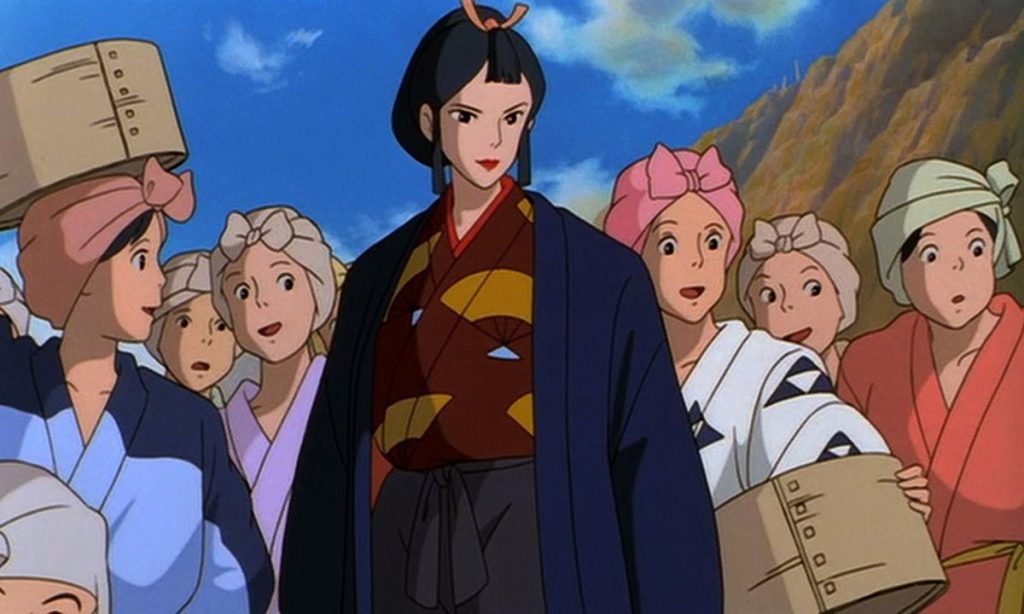
So, when Hayao Miyazaki walked on stage at the Toronto International Film Festival to introduce the English dub of Princess Mononoke, he completely bypassed the typical nice guy Oscar speech. Instead, he was all like, “Hey, I threw out all the rules of entertainment movie-making for this one. It’s also super long. Good luck.”
And that wasn’t just some humble-brag. He meant it. He took the classic movie-making rulebook, y’know, the one with tidy three-act structures, happy endings, and comic relief, and set it on fire. Princess Mononoke is 2 hours and 13 minutes of gorgeous chaos, and every second of it is Miyazaki flipping the bird at anyone who ever said animated films need to ‘follow a formula.’ Honestly? I’ve never loved him more for it.
Princess Mononoke: Not your typical Studio Ghibli comfort watch
Let’s be real: What comes to mind when you hear Studio Ghibli? You’re likely imagining sweet little forest spirits (Totoro), sweet flying witches (Kiki), or those pig pilots navigating some serious issues (Porco Rosso). Those films radiate a cozy atmosphere. But Princess Mononoke? No way.





This film grabs you by the collar right from the beginning when this boar god cursed creature is dissolving into black worms and wailing like crazy. You’re not in Ghibli Land anymore, buddy. And it only gets more intense from there, talking wolves, headless forest spirits, people getting their arms sliced clean off with arrows (and the animation is also really gorgeous, btw).
But here’s the wild part: it’s not all about violence just to seem cool. It’s violent because it keeps it real. Miyazaki is giving us a glimpse into a world where nature and humans are stuck in a messy, complicated, painful relationship, and getting out isn’t gonna be easy.
2 hours and 13 minutes, for an animated movie in the 90s? Sounds crazy. But Hayao Miyazaki didn’t care, as he needed all that time. And if you ask me, there’s not a single wasted moment. You need those extra minutes to soak in the world, every mossy tree, every smoky iron forge, every awkward pause between San and Ashitaka, moment where you’re like, “JUST KISS ALREADY!”
So, unlike those completely action-packed Hollywood films that zip through the plot like they’re worried you’re going to get bored and lose interest, Princess Mononoke takes it slow. It gives you space to breathe. It lets you sit in the moral grey zones. It enables you to wonder, “Wait, is Lady Eboshi the villain? Or is she kind of a badass?”
Why I’ll always pick Princess Mononoke as my favorite Hayao Miyazaki film
So, when Hayao Miyazaki’s Princess Mononoke was initially released in the West, it completely baffled the critics. They were like, “What do we even do with an animated film that’s all bloody, has deep thoughts, and is deeply anti-capitalist?” But then came Spirited Away, and suddenly everyone was like, “Ohhh, this Miyazaki guy’s a genius!”

Princess Mononoke fans were already 10 steps ahead, sipping tea in the corner like, “Took you long enough.” Now, it’s basically mandatory viewing for anyone who claims to care about animation, storytelling, or environmental themes in film. And yeah, it still feels the same after all these years. It might even hit harder today, with all the climate anxiety floating around.
Look, I love Totoro. I cry at Howl’s Moving Castle. I dream about having a bakery like Kiki. But Princess Mononoke? That one devastated me. In a good way. It’s one of those movies that doesn’t give you any answers. It just hands you a beautifully animated mess of gods, humans, curses, iron, trees, wolves, and tells you, “figure it out.”
It’s sort of hauntingly angry but somehow also strangely hopeful, all at once. So yeah. Hayao Miyazaki broke every rule of movie-making with this film. And what did we get in return? A cinematic masterpiece that changed the game, made us feel everything, and reminded us that sometimes, you have to throw out the rulebook to tell the truth. And honestly, I’m really glad he did.
Hayao Miyazaki’s film Princess Mononoke is currently available to watch on Netflix.
This post belongs to FandomWire and first appeared on FandomWire
